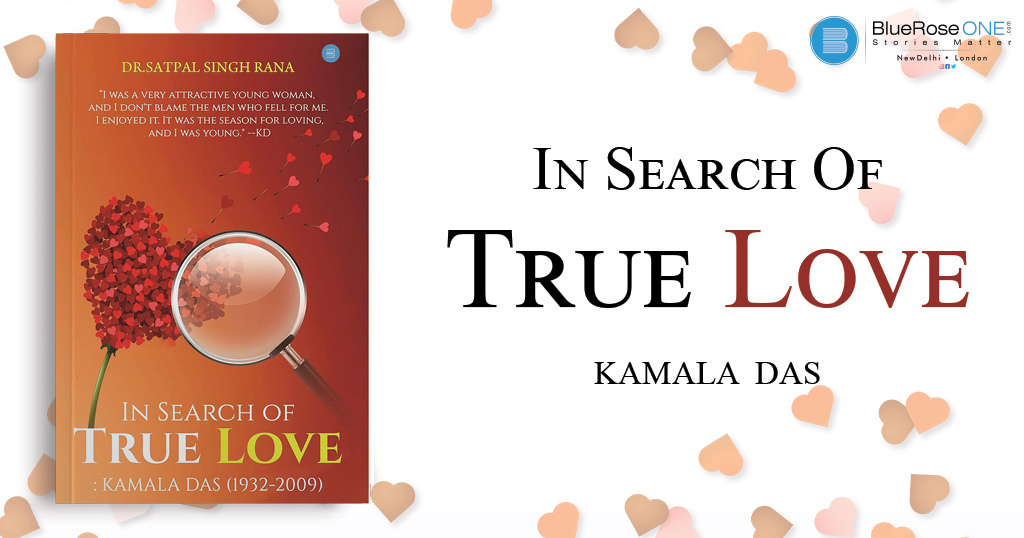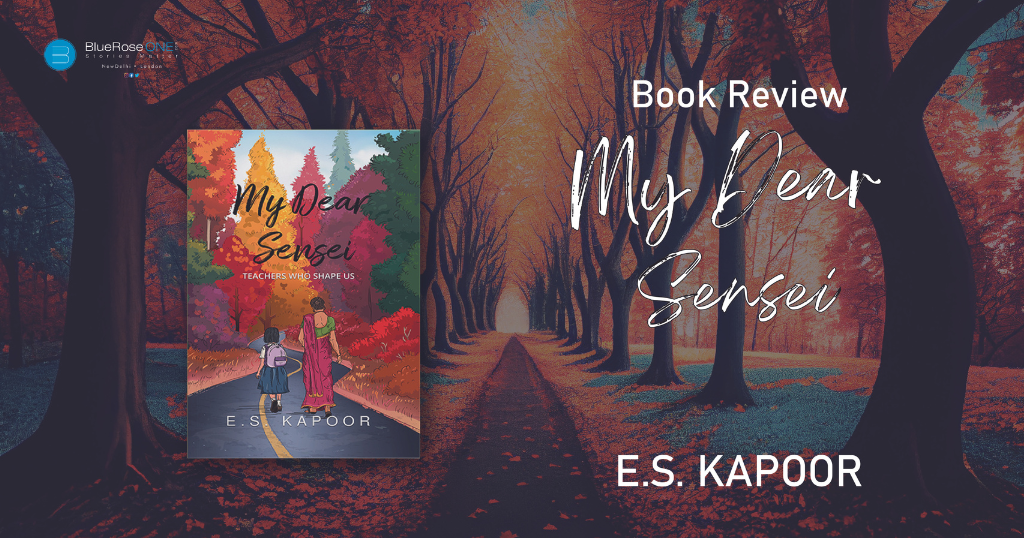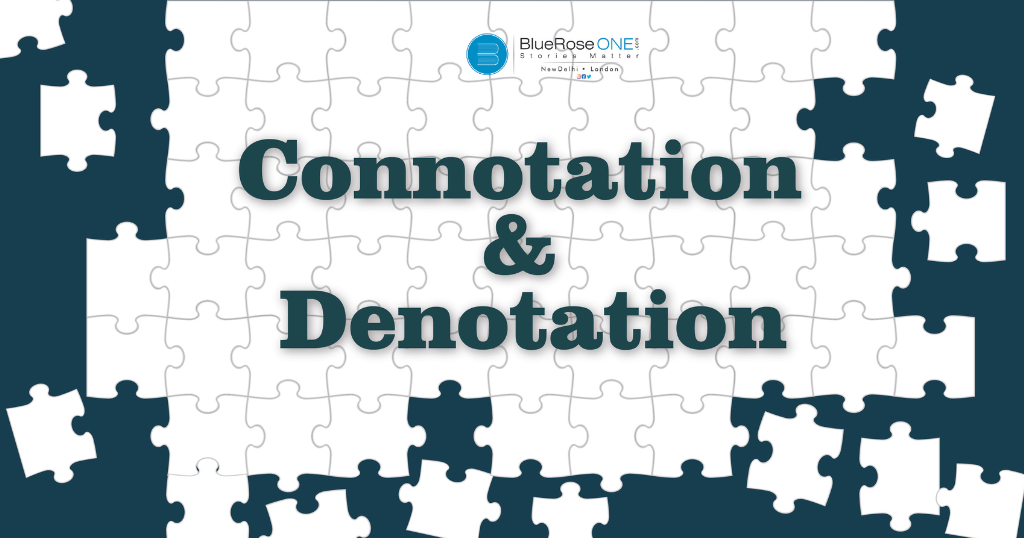
Connotation and Denotation: Meaning, Examples & Difference
In the intricate tapestry of language, words serve as both tools and artists, weaving nuanced meanings through connotation and denotation. This exploration delves into the dynamic interplay of these linguistic elements, unravelling their significance, providing examples, and elucidating the subtle yet impactful differences. You may also read: 7 Point Story Structure: Definition, Examples and More Understanding Connotation Connotation is the intricate dance of language that transcends the mere dictionary definitions of words. It is the realm of emotions, cultural nuances, and subjective interpretations that add layers of meaning to a word, shaping the way it is perceived and the responses it elicits. Beyond the straightforward denotation, words accumulate connotative associations through societal, historical, or personal contexts. The term “home” exemplifies the richness of connotation. Denotatively, it refers to a place where one lives. However, connotatively, “home” often carries emotions of warmth, security, and comfort. This emotional resonance transforms the word into a powerful symbol of belonging, transcending its literal definition. The connotation of “home” varies from person to person based on their experiences, cultural background, and individual perceptions. Similarly, the word “freedom” encapsulates a spectrum of connotative meanings. Denotatively, it signifies the state of being free from coercion or restraint. However, connotatively, “freedom” invokes sentiments of liberation, autonomy, and self-determination. The emotional charge associated with this word resonates deeply in various contexts, from political discourses to personal empowerment narratives. In essence, connotation breathes life into language, allowing words to carry the weight of human experiences and emotions. It transforms the ordinary into the extraordinary, making language a dynamic and evolving tapestry of meanings. You may also read: What is Situational Irony? Definition, Examples and Tips for Writers Exploring Denotation On the other side of the linguistic spectrum lies denotation, the stalwart anchor to linguistic precision. Denotation represents the literal and dictionary-defined meaning of a word, free from the subjective influences that connotation brings. It is the bedrock of clarity in communication, providing a standardised interpretation that transcends individual perspectives. Consider the word “book.” Denotatively, it refers to a set of printed pages bound together. This definition remains constant across different cultural and personal contexts. The denotation “book” ensures that, regardless of individual connotations or emotions attached to the concept of reading, there is a universal understanding of what constitutes a book. In a similar vein, the word “chair” denotatively describes a piece of furniture with a raised surface for sitting. The denotation remains unchanged, whether the chair is a simple wooden stool or an elaborate, cushioned armchair. The precision offered by denotation is particularly crucial in technical, scientific, or scholarly writing, where accuracy and clarity take precedence over subjective interpretations. In the intricate dance of communication, connotation and denotation coexist, each playing a vital role. While connotation adds depth, emotion, and cultural richness to language, denotation ensures a common ground for shared understanding. Together, they create a linguistic symphony where words resonate with both precision and emotional resonance, capturing the essence of human expression. You may also like: Imposter Syndrome for Authors: Steps to Overcome Imposter Syndrome Connotation vs. Denotation: A Comparative Table Aspect Connotation Denotation Definition The additional, emotional, or cultural meanings that words carry beyond their literal definition. The precise, literal, and dictionary-defined meaning of a word Emotional Tone Carries emotional weight, shaping how a word is perceived and evoking subjective responses. Emotionally neutral, providing a clear and objective meaning. Cultural Nuances Influenced by cultural contexts, often reflecting societal norms, values, or historical associations Less influenced by cultural nuances, focusing on universal meanings. Subjectivity Highly subjective, varying based on individual experiences, perspectives, and cultural backgrounds. Objective, offering a standardised interpretation applicable across contexts. Flexibility Flexible and adaptable, allowing words to convey different emotional shades in different contexts. Fixed and rigid, providing a stable foundation for precise communication. Examples Home connotes warmth, security, and comfort. <br> Freedom evokes sentiments of liberation, autonomy, and self-determination. A book refers to a set of printed pages bound together. Chair: A piece of furniture with a raised surface for sitting. Communication Impact Shapes the emotional resonance of a message, influencing how it’s received and interpreted. Ensures clarity and precision in communication, minimising ambiguity. Literary Usage Widely used in literature to add depth, emotional richness, and layers of meaning to written works. Employed for accuracy and precision, especially in technical or scholarly writing. You may also like: How to Publish a Book? | Publish Your Book | BlueRoseOne Deconstructing Examples: Connotation and Denotation in Action The word “snake”: Connotation: In literature, “snake” conveys cultural and symbolic associations, often suggesting betrayal, deceit, or danger. The connotation adds layers of meaning, contributing to the emotional impact of the word. Denotation: Denotatively, “snake” refers to a legless reptile. The denotation provides a straightforward, literal definition, stripping away emotional connotations. The word “youthful”: Connotation: “Youthful” holds positive connotations, evoking images of vibrancy, energy, and a positive outlook associated with youth. The connotation enriches the word with positive emotional nuances. Denotation: Denotatively, “youthful” strictly means having the characteristics of youth. It provides an objective, factual definition without emotional embellishments. The word “skyscraper”: Connotation: Beyond its literal meaning, “skyscraper” may connote modernity, progress, and urban development. The connotation introduces positive cultural associations to the word. Denotation: Denotatively, “skyscraper” refers to a tall building with a steel framework. The denotation maintains a neutral, factual description devoid of emotional connotations. You may also like: Too Good To Be True a Book By Prajakta Koli Navigating Subjectivity: A Closer Look Connotation’s subjectivity is influenced by cultural and personal associations, as seen in the term “family.” Connotation: “family” connotes warmth, support, and love, capturing positive emotions tied to personal experiences. Denotation: Denotatively, “family” refers to a household of parents and children. The denotation provides a factual, objective definition, separating it from the emotional connotations. Examining these examples illustrates the nuanced interplay between connotation and denotation, showcasing how words carry both emotional depth and factual precision in different contexts. You may also read: What is Ghostwriting? A Complete Guide for Beginners Real-World Application: Marketing Language In marketing, understanding connotation and…
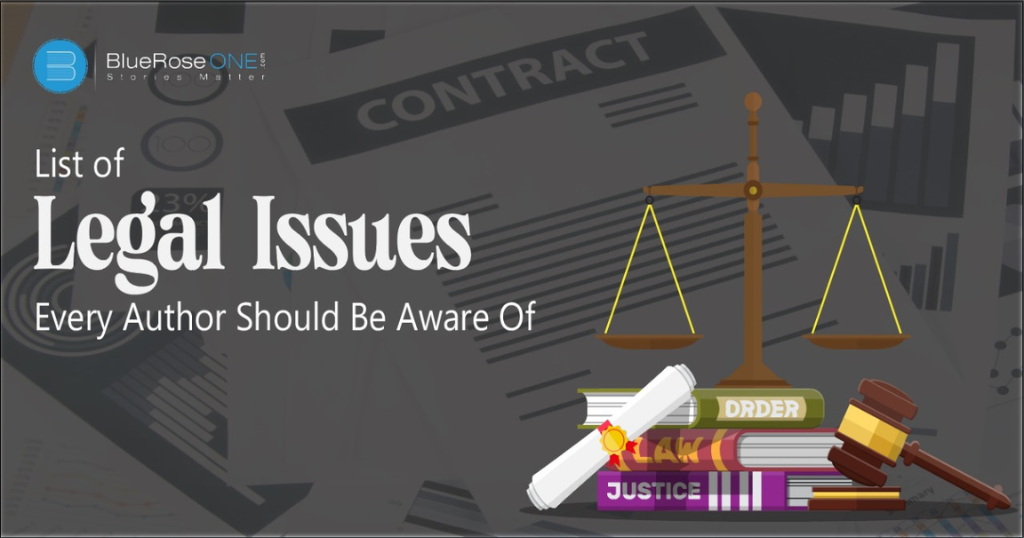
10 Legal Issues to be aware of Before Publishing a Book
Writing a book is a labour of love, dedication, and creativity. However, amid the excitement of bringing your words to the world, it’s crucial to navigate the complex terrain of legal considerations. Authors must be aware of various legal issues to protect their work and themselves and ensure a smooth publishing journey. Read: How much should my book cost? 7 Tips for pricing your book In this comprehensive guide, we’ll explore the key legal issues every author should be aware of before publishing a book. Copyright Law: Safeguarding Your Intellectual Property Contracts and Agreements: The Foundation of Legal Relationships Libel and Defamation: Navigating the Thin Line Privacy Issues: Respecting Boundaries Trademark Considerations: Avoiding Branding Pitfalls Plagiarism: Steer Clear of Unwanted Controversy Contract Termination: Knowing Your Exit Options Censorship and First Amendment Rights: Balancing Freedom of Expression Collaboration Agreements: Navigating Co-Authorship Challenges Electronic Publishing and Digital Rights: Navigating the Digital Landscape Copyright Law: Safeguarding Your Intellectual Property Copyright is a cornerstone for authors, offering protection for their creative works. It grants exclusive rights to the creator for a limited duration, ensuring they can control the use of their intellectual property. Understanding copyright is pivotal for authors. Copyright protects various forms of expression, including literary works like books, music, and art. It provides the exclusive right to reproduce, distribute, perform, and display the work. As an author, this means others cannot use your work without permission. Copyright lasts for the creator’s life plus a certain number of years, typically 70. Authors should be aware of fair use, allowing limited use of copyrighted material without permission for purposes like criticism, commentary, news reporting, teaching, scholarship, or research. Public domain works are not protected by copyright and can be freely used by anyone. For instance, if an author writes a novel, copyright ensures that others cannot publish or reproduce the exact text without permission. Fair use might come into play if a reviewer quotes a small portion for a critique. Understanding these aspects empowers authors to protect and share their work effectively. You may also like: Unlocking Success: How to Sell Books Online Effectively Contracts and Agreements: The Foundation of Legal Relationships Contracts are the bedrock of legal relationships in the publishing world. Authors must thoroughly comprehend and negotiate the terms before entering into any agreement. Contracts define the rights and obligations of all parties involved. Key components of a publishing contract include royalty rates, specifying the percentage of sales the author receives. The contract outlines the rights granted, determining whether the publisher has exclusive rights and the duration of these rights. Termination clauses detail the conditions under which either party can end the contract. Consider an author signing a publishing contract. The terms should specify the royalties, the scope of rights granted (e.g., print, digital), and any obligations like deadlines for delivering manuscripts. A well-negotiated contract ensures a fair and transparent relationship between the author and publisher. Libel and Defamation: Navigating the Thin Line Authors must tread carefully when discussing real individuals or entities in their work. Libel and defamation laws exist to protect individuals from false statements that harm their reputation. Authors should ensure that statements made are truthful or clearly presented as opinions. For example, if an author writes a memoir discussing experiences with public figures, stating verifiable facts is crucial to avoiding defamation claims. Presenting opinions based on disclosed facts adds a layer of protection. Understanding these legal nuances helps authors share their stories responsibly. In essence, by comprehending copyright law, mastering contract intricacies, and navigating the delicate terrain of libel and defamation, authors can safeguard their creative endeavours, foster positive collaborations, and share their narratives with legal confidence. You may also like: Top 10 Best Biographies of All Time Privacy Issues: Respecting Boundaries Respecting privacy is a fundamental ethical and legal consideration for authors, particularly when delving into non-fiction or personal narratives. Invasion of privacy claims can arise if an author reveals private, intimate, or embarrassing facts about an individual without their explicit consent. For instance, if an author is penning a memoir and includes sensitive details about a real person’s health or personal life, it’s crucial to obtain consent. Without it, the individual may have legal grounds to claim an invasion of privacy. Exceptions exist, such as when the information is a matter of public interest or already publicly disclosed. Understanding these nuances is vital for authors to strike a balance between storytelling and respecting the rights and privacy of the people involved. Authors can avoid legal complications by seeking permission or carefully navigating the exceptions when writing about real individuals. Trademark Considerations: Avoiding Branding Pitfalls Authors must navigate the landscape of trademarks to avoid legal entanglements. Trademarks include elements like names, logos, and slogans that identify and distinguish products or services. Using trademarks without proper authorization can lead to legal challenges. For instance, if an author titles their book using a phrase that’s a registered trademark for a well-known brand, it could result in trademark infringement. Researching existing trademarks and ensuring that the chosen title, cover design, or any other elements don’t encroach upon established trademarks is crucial. By respecting trademark rights, authors protect their work from legal disputes and maintain a positive reputation. Creativity can still thrive within the bounds of trademark law, as long as authors are vigilant and considerate of existing intellectual property. Plagiarism: Steer Clear of Unwanted Controversy Plagiarism is a grave offence in the literary world, both ethically and legally. It involves presenting someone else’s work or ideas as your own without proper attribution. Authors must ensure that their work is entirely original and that any borrowed content is appropriately credited. Utilising various available tools, authors can conduct thorough plagiarism checks before publication. These tools compare the author’s work against a vast database of existing content, highlighting potential matches. Proper attribution, citing sources, and obtaining permissions for any substantial excerpts are essential steps to avoid plagiarism-related controversies. For instance, if an author includes a passage from a public speech or a quote from another author, proper citation is crucial. Failure to do…
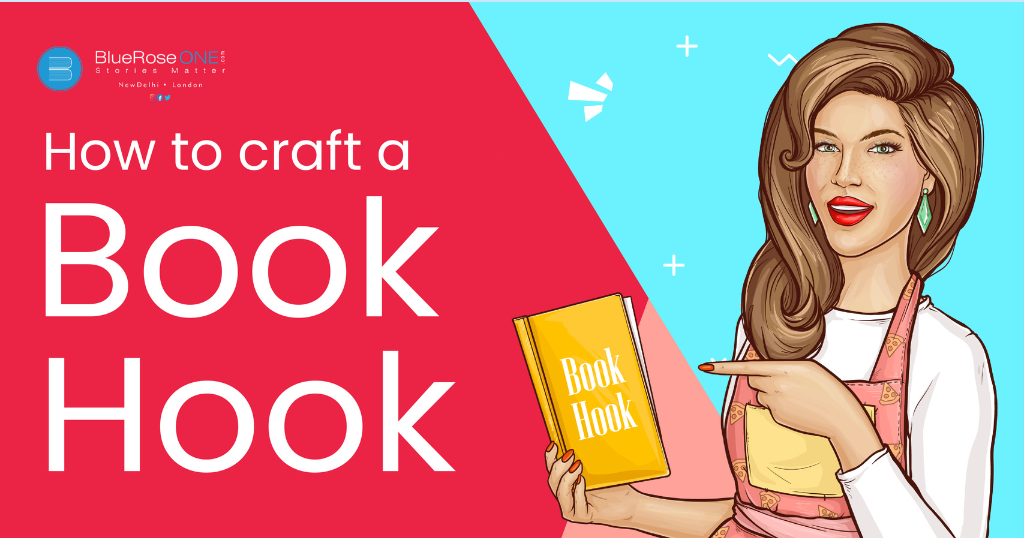
Learn How To Craft a Great Book Hook – Guide for Writers
In the vast landscape of literature, where countless books compete for attention, a compelling book hook is the secret weapon that can make your work stand out. A book hook is essentially a concise and captivating statement that grabs a reader’s attention, leaving them eager to delve into the pages of your book. Read: Get along with us on how to improve writing skills by doing these simple things. Crafting an effective book hook involves a delicate blend of art and strategy. In this comprehensive guide, we will unravel the intricacies of creating a book hook that captivates, intrigues, and leaves an indelible mark on your potential readers. Understanding the Essence of a Book Hook: At its core, a book hook is a literary tool with a profound marketing purpose—it serves as the beacon that draws readers into the world of your book. Think of it as the opening act that entices the audience, creating anticipation for the narrative spectacle that follows. The book hook encapsulates the soul of your story, offering readers a glimpse into its emotional landscape, thematic richness, and the promise of an unforgettable journey. In essence, it’s the literary equivalent of a trailer, providing a tantalising preview that beckons readers to explore further. Crafting a compelling book hook involves distilling the essence of your narrative into a succinct, magnetic force, leaving readers eager to unravel the mysteries within. Identifying Your Unique Selling Proposition (USP): Before embarking on the journey of crafting a compelling book hook, authors must engage in a crucial exercise—identifying the Unique Selling Proposition (USP) of their book. The USP is the secret sauce that sets your story apart from the vast literary landscape. What makes your narrative distinctive, unforgettable, or particularly intriguing? It could be a unique plot twist, an unconventional protagonist, or the exploration of a rarely-delved-in theme. Understanding your book’s USP is akin to uncovering its literary DNA, providing the foundational elements that will resonate with your target audience. A book hook anchored in the USP becomes a beacon, signalling to readers that your story offers something fresh, captivating, and unparalleled. It’s the key to unlocking the curiosity of potential readers and inviting them into a narrative world that promises a truly distinctive reading experience. Elements of an Effective Book Hook: Clarity and Conciseness: A successful book hook is a masterclass in clarity and conciseness. In a world inundated with information, brevity becomes a virtue. The challenge lies in distilling the essence of your story into a few impactful words. Avoid the temptation to delve into unnecessary details. Instead, focus on the core elements that make your book special. A clear and concise hook acts as a literary compass, guiding readers towards the heart of your narrative without unnecessary detours. Emotional Resonance: Infusing emotion into your book hook elevates it from a mere introduction to a resonant connection. Readers are drawn to narratives that evoke universal emotions—love, fear, curiosity, and triumph. A hook that taps into these emotional wells becomes a bridge between the author’s words and the reader’s heart. This resonance transforms a casual encounter with your book into a meaningful, memorable experience, creating a lasting impression that extends beyond the initial engagement. Intriguing Questions or Statements: An effective book hook operates as a literary hook, drawing readers in with intriguing questions or bold statements. Pose queries that linger in the reader’s mind, creating a sense of curiosity and anticipation. Craft statements that make readers yearn for answers, prompting them to embark on the journey your book promises. This technique not only engages the reader intellectually but also stirs the innate human desire for discovery, ensuring that your book remains at the forefront of their thoughts. Relevance to the Target Audience: Tailoring your book hook to resonate with the specific desires and interests of your target audience is paramount. Understanding the nuances of your readership allows you to craft a hook that speaks directly to them. Reflect their preferences in the choice of language, themes, or scenarios presented in the hook. When readers perceive a personal connection, they are more likely to view your book as a mirror reflecting their own literary cravings, increasing the likelihood of engagement. Showcasing Conflict or Tension: A compelling book hook introduces an element of conflict or tension, hinting at the challenges or obstacles your characters face. This creates a narrative tension that serves as a magnet for readers. A well-crafted hook that artfully suggests the stakes involved sparks anticipation, compelling readers to seek resolution within the pages of your book. By showcasing conflict, you invite readers into a world where the unfolding drama promises both struggle and triumph, captivating their imagination and motivating them to explore further. You may also like: 7 Top Rated Self-Help Books of all time in 2024 Crafting Your Book Hook Step by Step: Summarising Your Story: Summarising your story is the foundational step in creating a compelling book hook. This involves distilling the essence of your narrative into a concise, impactful statement. This summary should clearly articulate the central theme, conflict, or unique aspect that defines your book. It serves as the core message you want potential readers to grasp—a teaser that sparks curiosity. A well-crafted summary provides a roadmap for the subsequent elements of your book hook, offering a glimpse into the soul of your story. Identify Key Emotions: Understanding the emotional landscape of your story is crucial for connecting with readers. Emotions are the catalysts that draw readers into a narrative, and identifying the primary emotions your story evokes helps shape the tone of your book hook. Whether it’s joy, suspense, heartbreak, or a myriad of feelings, these emotions become the bridge between your narrative and the reader’s experience. Pinpointing these emotional cues allows you to infuse the hook with the right sentiment, creating a resonant connection that encourages readers to delve deeper into your book. Brainstorm Intriguing Elements: The brainstorming phase is about uncovering the gems that make your story stand out. What elements make it unforgettable?…
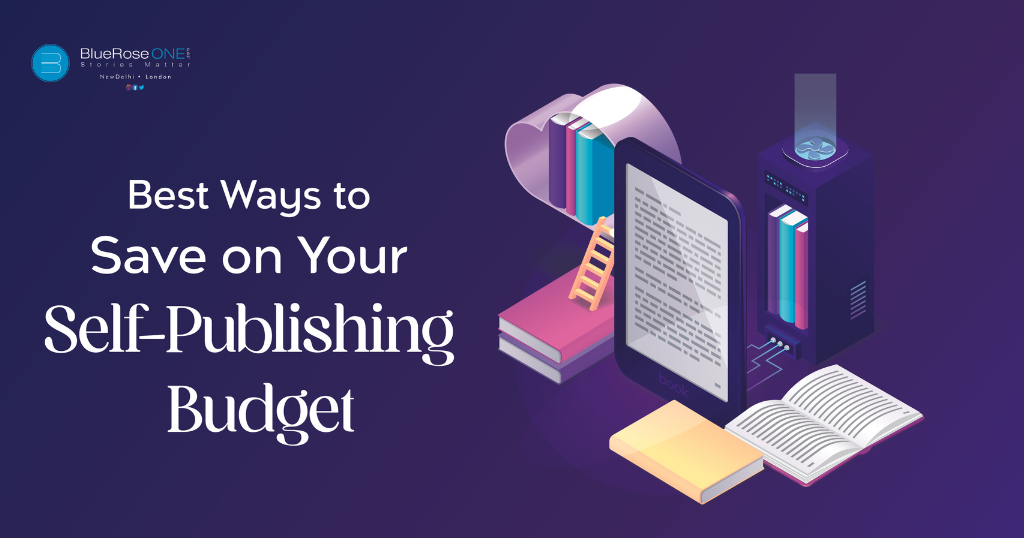
The Best Ways to Save on Your Self-Publishing Budget
Self-publishing offers authors the freedom to bring their literary creations to life without navigating the traditional publishing landscape. However, for many authors, financial considerations are a significant aspect of the self-publishing journey. In this comprehensive guide, we’ll explore the best ways to save on your self-publishing budget, covering key areas such as cover design, editing, formatting, marketing, and distribution. Read: Who is Jon Fosse? Things to know about Nobel Prize Winner 2023 Cover Design: Affordable Aesthetics Investing in a captivating book cover is non-negotiable, but it doesn’t have to break the bank. Consider these budget-friendly options: DIY Designs: Creating your book cover through do-it-yourself (DIY) methods is an accessible and cost-effective option, especially for those with graphic design skills or the willingness to learn. Platforms like Canva and Adobe Spark offer user-friendly interfaces with pre-designed templates, simplifying the design process. These tools provide a range of customization options, allowing you to choose from various layouts, fonts, and images. While DIY designs may require some time and effort, they provide creative control and can be a satisfying option for authors looking to add a personal touch to their covers. Pre-made Templates: For authors seeking a balance between cost efficiency and professional design, pre-made cover templates are a valuable resource. Numerous online platforms offer a variety of templates at affordable prices. These templates are designed by professionals and cover a range of genres and styles. Authors can choose a template that aligns with their book’s theme and then customise elements such as text, images, and colors. This option saves time compared to creating a cover from scratch and ensures a polished and cohesive design. While not as personalised as a custom design, pre-made templates provide a visually appealing and budget-friendly solution for authors. Freelance Designers: Hiring a freelance designer offers a professional and tailored approach to book cover design. Platforms like Fiverr and Upwork connect authors with skilled designers who provide services at various price points. Freelance designers bring expertise and creativity to the table, working closely with authors to understand their vision and genre requirements. This option is ideal for authors who prioritise a unique and high-quality cover but may not have the design skills themselves. While costs can vary, many freelance designers offer competitive rates, making professional cover design accessible to a wide range of authors. Editing: Professional Polishing on a Budget Editing is a critical step in creating a polished manuscript. Here’s how you can save without compromising quality: Beta Readers: Before seeking the services of a professional editor, engaging beta readers is a valuable step in the writing process. Beta readers are individuals who read your manuscript before it undergoes professional editing. They offer subjective feedback on various aspects such as plot, characters, pacing, and overall appeal. This initial feedback can be instrumental in identifying strengths and weaknesses in your work, giving you insights into areas that may need improvement. Beta readers provide a fresh perspective, helping you gauge the effectiveness of your storytelling and identify blind spots that you, as the author, might have missed. By addressing these aspects with beta reader input, you can potentially reduce the workload for a professional editor, making the editing process more focused and cost-effective. Editing Software: Editing software tools like Grammarly and ProWritingAid serve as valuable companions in the self-editing phase. While they are not substitutes for professional editors, these tools can significantly enhance your manuscript by catching grammatical errors, suggesting improvements in sentence structure, and offering insights into your writing style. They provide real-time feedback, helping you refine your prose and ensure a higher level of clarity and coherence. Integrating these tools into your self-editing process is a cost-effective way to elevate the overall quality of your writing before it reaches a professional editor. This not only streamlines the editing process but also contributes to a more polished manuscript from the outset. Affordable Editing Services: Exploring affordable editing services on platforms like Reedsy or hiring freelancers on Fiverr can be a budget-friendly approach to getting professional editing assistance. Many experienced editors offer their services at discounted rates, especially for basic editing needs. These services often include proofreading, copy editing, and sometimes even developmental editing. While rates may vary, it’s essential to review editors’ profiles, sample work, and client reviews to ensure they align with your specific requirements. Affordable editing services provide an opportunity for authors with budget constraints to access professional editing expertise without compromising on the quality of their final manuscript. You may also like: International Publishing: Expanding Your Reach Beyond Borders Formatting: Streamlining on a Shoestring Formatting your book for different platforms is crucial for a professional look. Save on formatting costs with these strategies: Self-Formatting: Self-formatting is a cost-effective option for authors looking to publish their work independently. Platforms like Kindle Direct Publishing (KDP) provide step-by-step guides and resources to help authors format their manuscripts for digital publication. While it requires time and attention to detail, self-formatting allows authors to retain full control over the layout and appearance of their e-books without incurring additional costs. By following the guidelines provided by these platforms, authors can ensure that their books meet the specifications required for various e-reading devices, contributing to a seamless reading experience for their audience. While it may involve a learning curve, the knowledge gained from self-formatting can be a valuable skill for future projects. Free Formatting Tools: Authors can take advantage of free formatting tools offered by platforms like Reedsy and Draft2Digital. Reedsy’s Book Editor and Draft2Digital’s formatting service are user-friendly tools designed to simplify the formatting process for e-books. These tools often include features that help authors create professional-looking layouts, ensuring that their books are compatible with different e-book platforms. While not as robust as professional formatting services, free tools provide a practical and cost-free solution for authors who want to achieve a polished appearance for their e-books without delving into the intricacies of manual formatting. Utilising these tools can save time and effort while maintaining a high standard of presentation. Templates: Downloading…
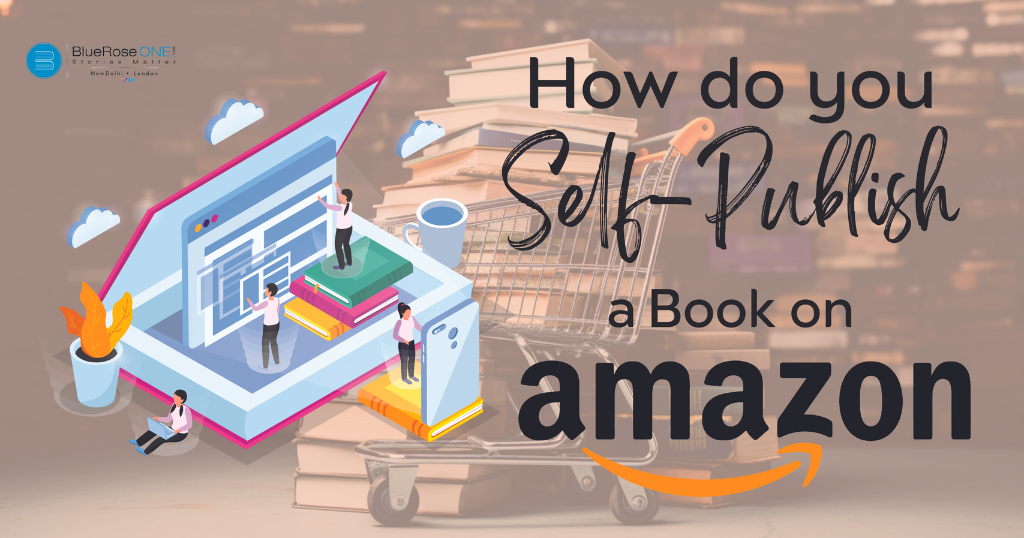
Self-Publishing your book on Amazon: A Detailed Guide
In the ever-evolving landscape of the publishing industry, self-publishing has become a game-changer, providing authors with the opportunity to bring their literary creations directly to readers. Amazon, with its Kindle Direct Publishing (KDP) platform, has played a pivotal role in democratising publishing. This comprehensive guide is designed to be your go-to resource for navigating the ins and outs of self-publishing on Amazon. Read: How can use ChatGPT & other AI systems to Assist you with Book Marketing. Understanding the Basics of Self-Publishing : What is self-publishing on Amazon? Self-publishing is a revolutionary concept that empowers authors to bring their creative works directly to the audience without traditional publishing intermediaries. Unlike traditional publishing, where authors rely on literary agents and publishing houses, self-publishing allows writers to maintain control over their work throughout the entire publishing process. In this digital age, self-publishing has become a viable and accessible avenue for aspiring and established authors alike. One of the key players in the self-publishing landscape is Amazon, and its Kindle Direct Publishing (KDP) platform has been a game-changer. Amazon KDP provides a user-friendly interface that enables authors to publish and distribute their books globally in both digital and print formats. This democratisation of publishing has opened doors for diverse voices and niche genres that might not have thrived in the traditional publishing model. The Rise of Amazon KDP in the Digital Publishing Era The digital publishing era marked a paradigm shift in the way books are produced, distributed, and consumed. Amazon, already a giant in e-commerce, recognised the potential of the digital book market and launched Kindle Direct Publishing. KDP streamlined the self-publishing process, allowing authors to publish their books as e-books for Kindle devices and apps, reaching a massive global audience. Amazon KDP’s rise has coincided with the surge in e-reader and tablet usage, making digital books more accessible than ever. Authors no longer need to navigate the traditional publishing gatekeepers; they can upload their manuscripts, design their covers, and set their pricing, giving them unprecedented control over their publishing journey. Amazon’s extensive reach and established customer base further propelled KDP into the forefront of the self-publishing revolution. Choosing Amazon for Self-Publishing Authors choosing Amazon for self-publishing benefit from the platform’s unparalleled global reach. Amazon has a massive customer base and a well-established infrastructure for book distribution. This means that authors can potentially reach readers in various corners of the world, exposing their work to a diverse and extensive audience. The Kindle Direct Publishing platform offers a straightforward and efficient publishing process. Authors retain creative control and can publish their works in multiple formats, including e-books and print-on-demand paperbacks. The accessibility and ease of use make Amazon a preferred choice for many authors venturing into self-publishing, creating a democratized publishing landscape where literary success is not solely determined by traditional gatekeepers but by the readers themselves. You may also like: The Rise of Self-Publishing and What it Means for Authors The Self-Publishing Process Creating Your Amazon KDP Account Setting up your KDP (Kindle Direct Publishing) account is the crucial first step in bringing your book to a global audience. Navigate to the KDP website and click on “Sign up” if you don’t have an account. Follow the step-by-step process to enter your personal and banking information. Once your account is set up, you gain access to the KDP dashboard. Navigating the KDP Dashboard The KDP dashboard is your command centre, providing a comprehensive overview of your book’s performance and sales. It displays critical information like sales trends, royalties earned, and customer reviews. Familiarise yourself with the various sections, such as Reports, Kindle eBook Preview, and Promote Your Book, to efficiently manage and track your book’s progress. Uploading Your Manuscript and Cover Use Kindle Create, Amazon’s formatting tool, to ensure your manuscript appears seamless on Kindle devices. Follow the guidelines for formatting, which include considerations for fonts, images, and overall layout. A professionally formatted book enhances the reading experience. Design an eye-catching book cover that reflects the essence of your work. Amazon provides cover templates, or you can hire a graphic designer for a customised touch. Upload both your formatted manuscript and cover through the KDP platform. Setting Rights, Pricing, and Distribution Understanding copyright is crucial. Ensure you have the rights to publish the content. Decide on pricing strategies for your e-book and print-on-demand versions. Consider factors like book length, genre, and market competition. Opt for global distribution to reach readers worldwide. Choose between Amazon’s various distribution channels, including Kindle stores and expanded distribution. Categories, Keywords, and Metadata Optimisation Leverage categories and keywords strategically to enhance your book’s discoverability. Choose categories relevant to your genre and use keywords that potential readers are likely to search for. Optimise your book’s metadata, including the title, subtitle, and book description. A well-crafted description and accurate metadata improve your book’s visibility in search results and category rankings. Enrolling in KDP Select Evaluate the pros and cons of exclusive distribution through KDP Select. Enrolling in KDP Select means your e-book is exclusive to Amazon. While this limits distribution to other platforms, it offers advantages like inclusion in Kindle Unlimited and the Kindle Owners’ Lending Library. Assess whether the benefits align with your publishing goals and target audience. Maximising Benefits Through KDP Select If you decide to enrol in KDP Select, make the most of its benefits. Promote your book during free promotions or Kindle Countdown Deals. Take advantage of Amazon’s promotional tools, such as Kindle Book Review and Kindle Daily Deal, to boost visibility. Keep track of your book’s performance and adjust your marketing strategy accordingly. By comprehensively understanding and implementing each step in the self-publishing process on Amazon, you position your book for success in a competitive market. From the initial setup to strategic marketing decisions, mastering the intricacies of KDP empowers you to reach a global audience and achieve your publishing goals. You may also like: The Importance of Professional Editing in Self-Publishing Refining Your Book Details for Self-Publishing Book Previews and Quality Checks Previewing your book on…
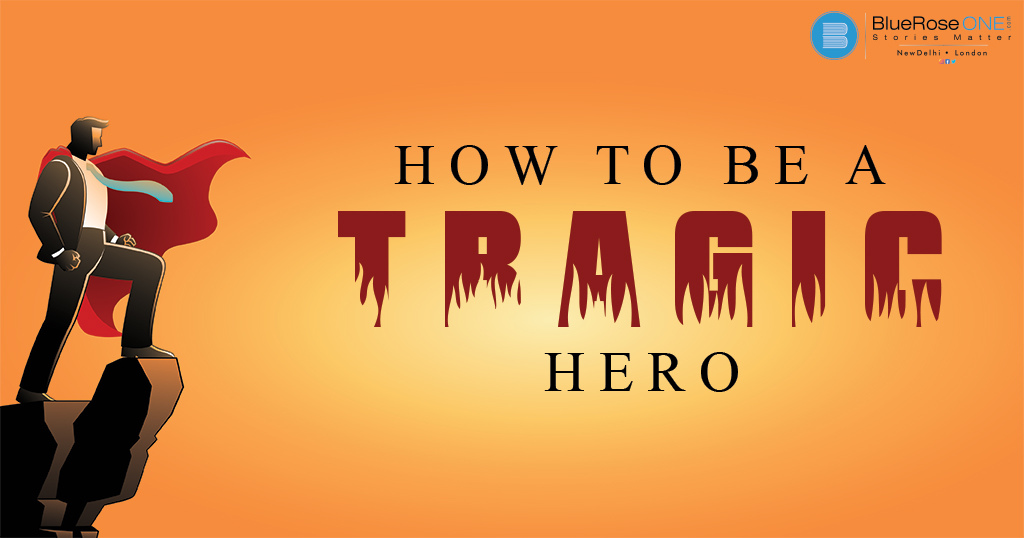
How to be a TRAGIC HERO
The concept of the tragic hero has been a fundamental element in literature, captivating audiences with its exploration of human flaws and the consequences of unchecked ambition or hubris. From ancient Greek dramas to modern literature, the tragic hero remains a compelling archetype. In this blog, we will delve into the definition, evolution, and common traits of a tragic hero, supported by illuminating examples from both classic and contemporary works. Defining the Tragic Hero: A tragic hero is a central figure in a literary work, often a protagonist, whose journey ends in tragedy due to a combination of personal traits and external circumstances. This archetype is deeply rooted in Aristotle’s “Poetics,” where he outlined key characteristics that define a tragic hero. The first element is the hero’s nobility, suggesting that the character holds a high social status or possesses admirable qualities. This nobility makes the hero’s fall more impactful and relatable to the audience. The tragic flaw, known as hamartia, is the second crucial component. It represents a fundamental mistake or character defect in the hero that contributes to their downfall. This flaw could be hubris, excessive pride, or a lack of self-awareness. The hero’s actions, guided by this flaw, set in motion a series of events leading to their tragic end. Read: What are Figurative Language Examples: Everything to Know about Figurative Language The third element is anagnorisis, which refers to the hero’s realisation of their mistakes. This self-awareness often comes too late and serves as a moment of profound insight, heightening the tragic impact of their fate. Aristotle believed that the experience of witnessing a tragic hero’s downfall evokes catharsis, a purging of emotions, and a sense of emotional release for the audience. This cathartic effect is a crucial aspect of the tragic genre, providing a transformative experience for the spectators. Evolution of the Tragic Hero: The concept of the tragic hero originated in ancient Greek tragedies, where characters like Oedipus in Sophocles’ plays embodied the archetype. These early tragic heroes adhered to Aristotle’s principles of nobility, hamartia, and anagnorisis. Oedipus, for instance, was a noble king whose tragic flaw, his ignorance of his true identity, led to his inevitable downfall. As literary traditions evolved, so did the tragic hero. In Shakespearean tragedies, characters like Macbeth and Othello became central figures. Shakespeare introduced more complex and psychologically nuanced protagonists. Macbeth’s ambition and Othello’s jealousy became their fatal flaws, leading to their tragic fates. The nobility of these characters was often intertwined with their flaws, creating a more intricate portrayal of the human condition. In modern literature, the concept of the tragic hero has expanded to include antiheroes who deviate from traditional notions of nobility. Characters like Willy Loman in “Death of a Salesman” challenge societal expectations but still grapple with internal conflicts. Willy’s tragic flaw lies in his distorted perception of success and his pursuit of the American Dream. The evolving nature of the tragic hero reflects changing cultural and societal values, allowing for a broader and more diverse exploration of tragic narratives. Common Traits of a Tragic Hero: You may also like: 7 Top Rated Self-Help Books of All time in 2024 Examples of tragic heroes: The tragic hero archetype continues to be a powerful and enduring element in literature, transcending cultural and temporal boundaries. Through the lens of these complex characters, audiences are invited to explore the intricacies of the human condition, confronting the consequences of hubris, ambition, and the innate flaws that define us. As literature evolves, so too will the tragic hero, a timeless figure destined to navigate the treacherous waters of fate and self-discovery. Publish your book with BlueRoseONE and become a bestselling author. Don’t let your dream of becoming an author fade away, grab the opportunity now and publish your book – be it fiction, non fiction, poetry or more.

How can use ChatGPT & other AI systems to Assist you with Book Marketing
The landscape of book marketing has evolved significantly in the digital age, and the integration of AI technology has emerged as a powerful tool for authors and publishers. Among these technologies, ChatGPT stands out as a versatile and impactful AI model that revolutionises various aspects of book marketing. Section 1: Personalised Audience Engagement Tailored Recommendations: ChatGPT’s capacity to analyse vast amounts of data enables it to discern intricate patterns in reader behaviour, preferences, and demographics. By understanding the nuances of individual interests and reading habits, it excels at offering personalised book recommendations. Imagine a reader interacting with an AI-powered chatbot on a book retailer’s website. As the reader explores various genres and authors, ChatGPT processes this information in real-time. It analyses the genres the reader shows interest in, the authors they prefer, and even their interaction patterns on the site. Leveraging this data, ChatGPT can suggest highly tailored book recommendations. For instance, if the reader has shown a penchant for psychological thrillers and has previously engaged with works by a specific author, ChatGPT can intelligently recommend books from similar authors or within the same genre. This level of personalisation enhances the chances of the reader discovering new books that align closely with their tastes, thereby increasing engagement and potential sales. Interactive Experiences: ChatGPT’s capabilities extend beyond mere recommendations; it can also generate interactive experiences that enrich the reader’s engagement with authors and their works. These experiences include virtual book readings, quizzes, or personalised storytelling sessions. Let’s consider a scenario where an author uses ChatGPT to conduct virtual book readings. Instead of traditional in-person events, the author hosts a live reading session on social media or a dedicated platform. With ChatGPT’s assistance, the author can engage directly with the audience, allowing them to ask questions, share thoughts, or even participate in the storytelling process. ChatGPT assists by generating dynamic, conversational content based on audience input. For instance, during a storytelling session, if the audience suggests a particular plot twist or a character name, ChatGPT can seamlessly incorporate these suggestions into the ongoing narrative, creating an interactive and personalised experience for the audience. Similarly, authors can leverage ChatGPT to design quizzes or interactive stories related to their books. This fosters a deeper connection between the author’s work and the audience. By tailoring content based on the audience’s responses, ChatGPT ensures that each interaction feels unique and engaging. In essence, ChatGPT’s ability to create personalised and interactive experiences transcends traditional marketing approaches. It enables authors to forge stronger connections with their audience, turning passive readers into active participants in the literary experience. This, in turn, cultivates a loyal fan base and boosts the visibility and appeal of an author’s work in the highly competitive book market. Section 2: Content Creation and Optimisation: AI-Generated Content: ChatGPT’s ability to comprehend language nuances and generate coherent text makes it a valuable tool for crafting various marketing materials, including book blurbs, press releases, and social media posts. Consider an author preparing to launch a new book. With ChatGPT’s assistance, they can create compelling book blurbs tailored for different audiences. By inputting key information about the book—such as its genre, themes, and unique selling points—ChatGPT can generate multiple versions of concise and engaging blurbs. For example, it can craft a blurb that appeals to mystery enthusiasts by emphasising the suspense elements, while another blurb could focus on the book’s emotional depth to attract a different segment of readers. Press releases, crucial for garnering media attention, can also benefit from ChatGPT’s capabilities. By providing details about the book launch, the author’s background, and notable aspects of the storyline, ChatGPT can assist in composing press releases that capture journalists’ interest and effectively convey the book’s significance. Moreover, ChatGPT can aid in crafting social media posts that resonate with diverse audiences. For instance, it can generate engaging tweets, Facebook updates, or Instagram captions tailored to specific platforms and demographics. By understanding the tone, language style, and preferences of various social media users, ChatGPT ensures that the content aligns with the expectations of each platform’s audience. SEO and Metadata Enhancement: Optimising book metadata and refining descriptions are crucial for improving a book’s visibility online. ChatGPT’s capabilities extend to suggesting keywords, refining descriptions, and enhancing metadata to boost a book’s discoverability across search engines and online platforms. Let’s consider an author seeking to enhance their book’s online presence. By providing ChatGPT with the book’s title, genre, and a brief summary, the AI can suggest relevant keywords that potential readers might use in search queries. Incorporating these keywords into the book’s metadata, descriptions, and promotional materials can significantly enhance its visibility on search engine results pages (SERPs) and online bookstores. Furthermore, ChatGPT can assist in refining book descriptions to maximise their impact. By analysing existing descriptions or summaries and suggesting improvements, such as clearer language, more compelling hooks, or formatting enhancements, ChatGPT ensures that the book’s description is captivating and effectively communicates its essence to potential readers. Section 3: Data-Driven Insights and Analytics: Audience Analysis: ChatGPT’s prowess in analysing reader behaviour and preferences is instrumental in understanding audience dynamics. Through its ability to process and interpret vast amounts of data, it can derive insights from reader interactions, reviews, and engagement patterns across various platforms. For instance, consider an author seeking to promote a mystery thriller. ChatGPT can analyse reader interactions on social media, book forums, and even reviews of similar titles to identify specific preferences within the mystery genre. It can be discerned whether readers are inclined towards classic whodunits, psychological thrillers, or crime procedurals. This insight enables authors and publishers to tailor marketing strategies, including crafting compelling book descriptions, designing targeted campaigns, or even selecting the most appealing cover art that resonates with the identified audience preferences. Moreover, ChatGPT’s analytics can help identify niche segments within broader genres. For example, it might detect a rising interest in mystery thrillers set in specific locations or featuring unique protagonists. Armed with this information, authors can create content tailored to these niche preferences, thereby enhancing…
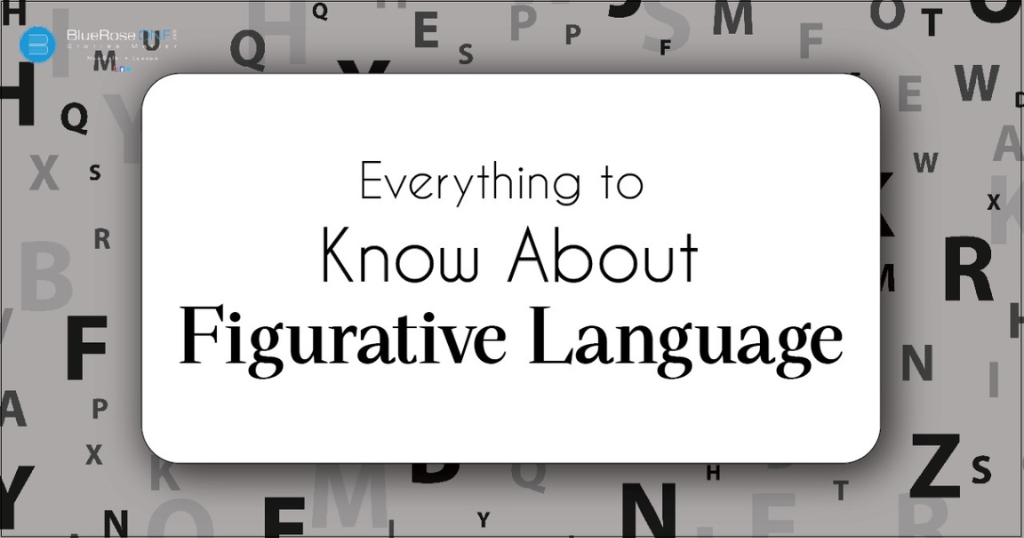
What are Figurative Language Examples: Everything to Know about Figurative Language
Figurative language serves as a powerful tool in the realm of communication, adding depth, vividness, and nuance to our expressions. In this comprehensive exploration, we delve into the intricacies of figurative language, providing a thorough understanding along with a plethora of examples to illuminate its various forms. Read: How Much Should My Book Cost? 7 Tips for How to Price Your Book. Introduction to Figurative Language: Figurative language, often referred to as a figure of speech, transforms language into an artistic tapestry, going beyond the mere literal interpretation of words. It involves the skillful application of various techniques to convey ideas, emotions, and concepts in a more imaginative and nuanced manner. By employing these linguistic devices, writers and speakers can elevate their communication, creating a richer and more resonant experience for their audience. You may also like: The Rise of Shakti by Megha Shakti: Book Review Understanding Figurative Language: Figurative language operates at the intersection of language and imagination. Its essence lies in transcending the ordinary, offering a creative means to communicate thoughts, emotions, and experiences. Unlike literal language, which straightforwardly conveys facts, figurative language takes a more indirect route. It involves techniques like similes, metaphors, personification, hyperbole, and more. These tools serve as linguistic brushstrokes, painting vivid pictures and evoking emotions that go beyond the surface meaning of words. Similes: A Comparative CanvasSimiles are linguistic gems that enrich our language by drawing comparisons between two disparate elements using the words “like” or “as.” Consider the phrase “as brave as a lion.” Here, the simile paints a vivid picture of someone’s courage by likening it to the bravery often associated with a lion. Similes serve as a bridge between the familiar and the unfamiliar, making abstract concepts more relatable. Explore a variety of simile examples to appreciate the diverse and imaginative ways in which they enhance our communication. Metaphors: Unveiling Deeper MeaningsMetaphors elevate language by equating one thing to another without the use of explicit comparative terms like “like” or “as.” “Time is a Thief” is a poignant metaphor that captures the essence of time slipping away irreversibly. Metaphors serve as powerful tools for conveying complex ideas, allowing readers to grasp nuanced concepts through familiar associations. Delve into a series of illustrative metaphoric examples to uncover the richness and depth they bring to our expressions. Personification: Breathing Life into Inanimate ObjectPersonification involves attributing human qualities to non-human entities and infusing them with life and personality. In the phrase “the wind whispered through the trees,” the wind is personified, gaining the human ability to whisper. This technique fosters a deeper connection between the reader and the elements of nature. Explore a range of personification examples to understand how this figurative language form breathes life into the inanimate, making the world more vibrant and relatable. Hyperbole: Exaggeration for EmphasisHyperbole adds flair and emphasis to language through exaggerated statements that are not meant to be taken literally. When someone says, “I’ve told you a million times,” they aren’t stating a precise count but emphasising the frequency of their repetition. Hyperbole injects drama into expressions, amplifying the impact of the intended message. Immerse yourself in a collection of hyperbole examples to appreciate how this figurative language form enhances the art of communication. Idioms: Expressions Beyond Literal InterpretationIdioms are cultural expressions whose meanings cannot be deduced from the individual words used. “Kick the bucket,” for instance, doesn’t involve literally kicking a bucket but refers to someone passing away. Idioms add colour and depth to language, often rooted in historical or societal contexts. Explore a myriad of idiom examples to grasp the diversity and cultural richness embedded in these figurative expressions. Onomatopoeia: Echoes of Sound in LanguageOnomatopoeia involves words that mimic the sounds they represent, creating a sensory experience within language. Words like “buzz,” “hiss,” or “clang” evoke auditory sensations, adding a layer of vividness to written and spoken communication. Immerse yourself in the world of onomatopoeia through a collection of expressive examples that showcase how this figurative language form captures the essence of sound. Symbolism: Layers of Meaning in ObjectsSymbolism imparts deeper meanings to objects, actions, or concepts, often representing something beyond their literal interpretation. For example, a red rose can symbolise love, while a winding road may represent life’s journey. Symbolism adds layers of significance to language, allowing writers to convey profound ideas through carefully chosen symbols. Explore a diverse array of symbolism examples to unravel the richness and depth encapsulated in this figurative language form. You may also like: What is Plot Structure? Definition with Examples How to Master the Art of Figurative Language in Your Writing Figurative language is the secret weapon in a writer’s arsenal, capable of transforming ordinary prose into a tapestry of vivid imagery and evocative expression. Whether you’re crafting fiction, poetry, or even non-fiction, understanding and adeptly employing figurative language can elevate your writing to new heights. Here’s a guide on how to infuse your work with the power of metaphors, similes, personification, and more. Identify Your Message: Before delving into figurative language, identify the core message or emotion you want to convey. Whether it’s love, loss, joy, or despair, having a clear understanding of your theme lays the foundation for effective use of figurative language. Choose the Right Device: Figurative language encompasses various devices, each serving a unique purpose. Similes and metaphors draw comparisons; personification attributes human qualities to non-human entities; and hyperbole exaggerates for effect. Select the device that aligns with your intended impact. Similes and Metaphors: Similes and metaphors breathe life into descriptions. Similes use “like” or “as” to compare two seemingly unrelated things. For instance, “Her laughter was like a melody.” Metaphors, on the other hand, establish a direct equivalence, such as “Time is a thief.” Experiment with these devices to add depth and resonance to your writing. Personification: To add a touch of the human to the non-human, employ personification. The wind can “whisper secrets,” and the flowers can “dance in the breeze.” This anthropomorphic approach fosters a connection between the reader and the elements…

